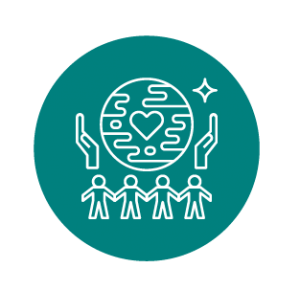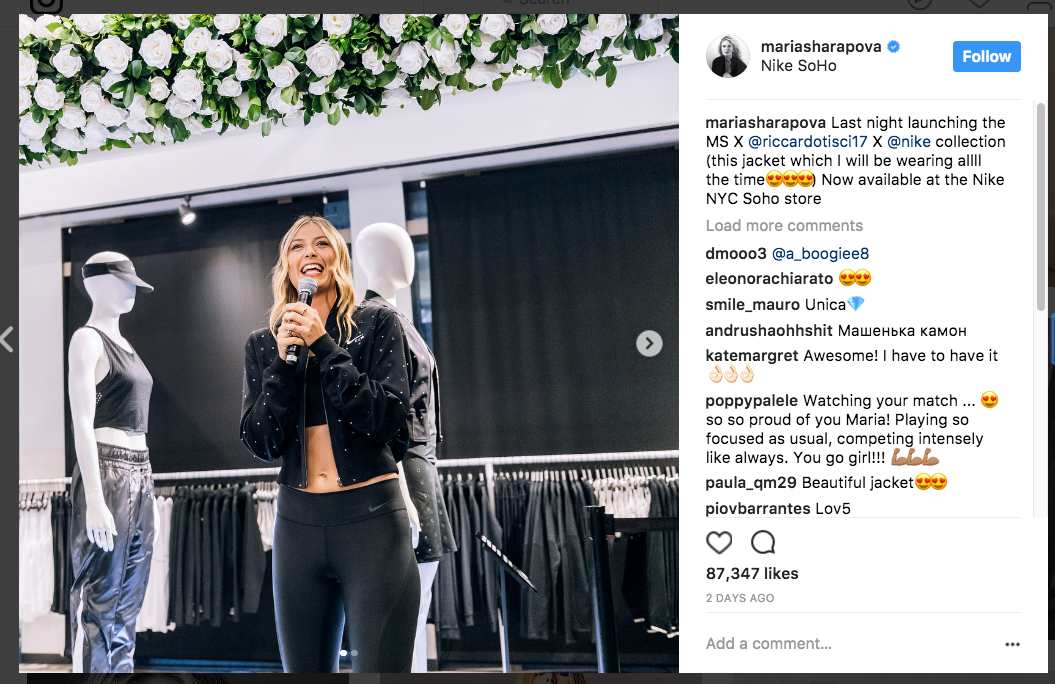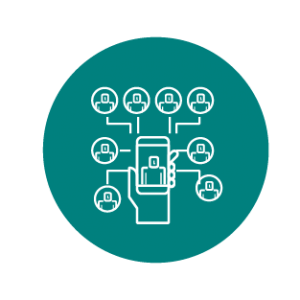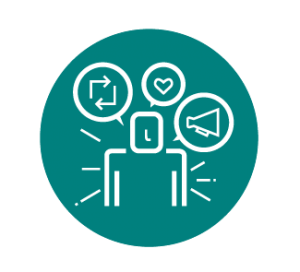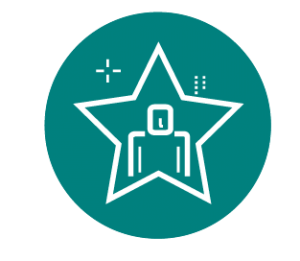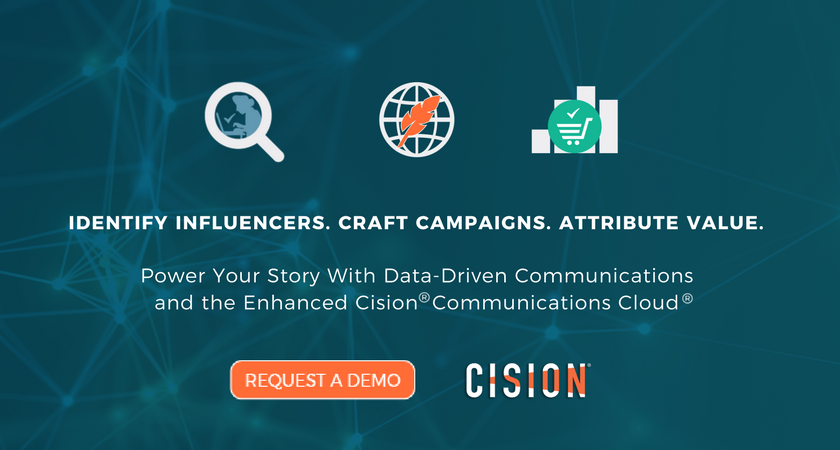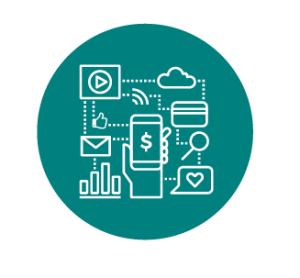 Think back to a major purchasing decision. Maybe you were looking for a new car or a specialty service. Where did you search for information? Who did you talk to?
Think back to a major purchasing decision. Maybe you were looking for a new car or a specialty service. Where did you search for information? Who did you talk to?
With the explosion of the internet, consumers now have much more information before they ever walk into a dealership or communicate with a brand. Online they can see pricing, news articles, consumer reviews and get recommendations from others. Brands need to be in involved from the start with online sources of information from the press to social media influencers. Know where these consumers are looking and why so that you can position your strategy accordingly.
One effective way to capture consumer attention is by working with influencers — real people with engaged audiences who can significantly affect the growth of your brand. When connecting with influencers, it is important to keep in mind their audiences and motivations as well a focus on mutual respect and building a long-term relationship. Like every other relationship in life, it requires give and take.
Here are some of the benefits of working with influencers:
- Targeting and engaging with new audiences.
- Sharing educational resources and how-to tutorials.
- Creating a personal context and “me, too” effect.
- Building positive opinions, sentiment or reviews.
- Ensuring customer satisfaction and loyalty.
Influence Is Impactful
As an extension of a brand’s public relations and social engagement strategy, the use of influence is much more valuable than the traditional use of marketing push-tactics.
According to The Earned Media Opportunity, “Influencers can self-select and have a multiplier effect influencing many others to convert at higher rates than paid media. This makes earned media especially effective in increasing prequalification of prospects and increasing engagement with the right prospects.”
To use this tactic successfully, influencers must be found strategically. It’s the right person coupled with the right targeted message, platform and audience that gets the job done — not the messenger or content alone. That’s why many brands are retreating from targeting the influencers with the largest followings, instead focusing on those who have the most relevance to their customers. Reach becomes the second factor in the equation.
That trend will continue. Many influencers already are more selective about the brands they work with, and customers are more wary.
Nike has worked with Maria Sharapova as an influencer for years but continues to work with her due to their growing relationship and the relevance her athletic following has to their brand.
Caption: “Last night launching the MS X @riccardotisci17 X @nike collection (this jacket which I will be wearing all the time) Now available at the Nike NYC Soho store.” Image source.
To learn more about how your business can best optimize their Instagram earned media strategy, check out Instagram Best Practices.
Know How to Find the Right Influencers
Finding influencers isn’t hard. They’re everywhere. What’s trickier is finding the right influencer for your brand. The right influencer for your competitor might not fit your brand and what it hopes to achieve through influencer outreach. This is why it is important to research your customer first. Important factors to uncover are age, gender, lifestyle, buying habits and brand preferences. By zeroing in on the customer, it is easier to find influencers that resonate with depth and relevance.
Remember that reach doesn’t equal influence. A good question to ask when searching for influencers is: Who reaches our brand’s demographic? Rather than who has the most followers?
Often the best influencers are the consumers already talking about your product or service. They’re so authentic that people can’t help but follow along. Your job is easy — just fan the flames every so often to get them to champion the brand even more.
Find Influencers Using Smart Tools
Manual searches through Twitter or Google won’t cut it. Identifying the people who can truly connect with your audience requires a comprehensive influencer database. These databases, like the one offered by Cision, provide a 360-degree view of influencers, including their pitching preferences, contact information, body of work and even the topics they’re covering right now. Remember, the people with “real influence” have a couple of key qualities. Think of them as points on a treasure map. Get them right, and you’ll find “x marks the influencer” right away. You’ll want to consider at least these three:
1. Relevance has to do with industry. Look for people who not only know your market but also enjoy talking about it. Location can also play a factor if you’re trying to grow reach and impact in a certain city or region.
2. Reach involves networks and platforms. Maybe you’re looking for breadth (number of followers) but keep in mind depth (a powerful niche). Both approaches work, but the choice depends on your brand’s goals and outcomes.
3. Resonance refers to social validation, i.e., engagement. You may have found a super-smart and savvy blogger or vlogger, but is their content being shared or commented on? Social amplification is a must when it comes to influencer relations.
Vet the Influencers
Once influencers have been identified, the job is not yet done. They need to be vetted through a combination of tech and human intelligence.
Once you have your influencer data, analyze it. Who would be a good fit for your current PR initiative on Instagram? Who should be saved for a future Facebook Live campaign? What messages will resonate with their audiences?
Remember, it’s the combination of messenger, message, platform and audience that’s potent. So keep a working list of influencers. You never know who might turn a campaign into an astounding success. Cision recently updated its PR software to meet communicators’ influencer relation needs better. Cision’s solution identifies brand’s most important contacts, wherever they are. It also facilitates influencer outreach, which we cover in the following section, by creating better engagement opportunities through real-time social media monitoring and 360-degree influencer profiles.
Influencer Outreach
You have found influencers and determined which are right for your message and audience. Good! Now it’s time for outreach.
Media outreach has become more difficult this past year not only because of the political atmosphere but also due to growing popularity of social media and influencer marketing. This rapid change is making the relationships between brands and influencers more vital than ever.
Influencer outreach borrows from activities like media relations and traditional networking, but it’s not exactly the same. The audience is influencers, not the media nor a public relations peer.
Influencers aren’t exactly like the target audience, either. They’re the protectors of it and are sensitive to your advances. Be careful!
When you reach out to influencers in the right way, everyone wins:
Research who you are contacting and their media outlet. Look into more than just how this person relates to your brand and take note. Knowledge of past work, interests, and strengths is how you get Influencers to say “yes and thank you for understanding my work!” Further, 82 percent of journalists say PR professionals can improve by researching and understanding their media outlet.
Know what to include in your pitch. Create a pitch that is tailored to the information learned about the Influencer and also unique to your brand to stand out. Consider that the use of multimedia is increasingly important when presenting ideas. Media respondents said they “always” or “often” use multimedia elements 70.5 percent of the time, compared to their use of data which respondents rated at 56 percent of “always” or “often” usage. A couple of suggestions are to use visuals or videos of a work site or a specific product’s use. Further, brand communicators should include photo credits and captions which clearly describe a photo’s content, as well as the dateline city and the source (who is responsible for the news and images).
- Communicate through email. Use email not messenger apps or phone calls to contact potential influencers. This study shows that 90 percent of respondents indicate that email is the best way to directly pitch an idea.
- Send a clear message. It should be specific, like a call to action. Set expectations and goals at the beginning. Do you want influencers to promote, share, or create content? Give clear instructions, but don’t micro-manage.
- Determine metrics for success. Establish metrics at the outset of an influencer program. It’s the only way to know if milestones and outcomes are being met. If the goal is brand awareness, determine the numbers that prove success. Also institute metrics for the outreach itself, just as you would when pitching a story or starting a new PR initiative.
- Build a list. In this regard, influencer outreach is exactly like media relations. Use a database or tools like the ones mentioned earlier; gather contact information and other data and keep track of who’s been contacted, when and where.
- Document everything. Influencer outreach isn’t scalable without documented processes. Share them with the team. Revisit them regularly, too. When influencer marketing is happening online, change is the only constant.
- Establish rapport. Remember Influencers are not billboards, they are human beings that need to be appreciated as such. They should have full control over their content and behavior, the exception being sponsored content. But they do need to follow the guidelines given, typically a simple acknowledgment that they’re being compensated for the work. If you have found the right fit and put effort into trying to form a harmonious relationship with solid procedures, everyone will benefit.
- Measure your efforts. We’ll get into measurement again in the next section, but here it’s specific to measuring outreach. How are efforts faring? Are people joining the program? Sticking with it? Why or why not?
- Refine. Analyze the data gathered from interactions with influencers regularly. Let it guide next steps and improvements with outreach, as well as the overall program.
Relationship Management
It’s no accident that influencer outreach is synonymous with relationship management. Reaching out to influencers and getting them to participate isn’t a one-and-done activity. It requires sensitivity and genuine connection.
When influencers drop off the grid, follow up. Find out what’s going on before dismissing them and moving onto another person. It’s a simple act of caring, but it will ensure long-term loyalty and advocacy.
Other times, influencers have life changes. Your fashionista has turned into a mommy blogger. That’s great if you have an audience of fashionable mommies-to-be, but not so great if the target is single, career-focused females.
Don’t worry when that happens. Not all influencer relationships are going to stand the test of time. It’s why you created and continue to update a list of influencers in the first place. You have people waiting in the wings who can take the stage.
To be successful with relationship management, consider these eight tips. They will help you define and implement the process.
- Stay in touch. Winning over the influencer isn’t the hard part; keeping them is. Stay in regular contact so that they feel cared for and don’t think they’re a checkmark on a list. Remember that 58 percent of influencers and journalists said displaying knowledge of their work is what drove them to pursue a relationship with a brand. So continually keeping up to date with their work is important for a sustainable relationship.
- Ask for feedback. Influencers can act as a focus group for several things. One is the influencer program. Ask them what they like about it and what they don’t. Give them opportunities to offer suggestions. The more involved they are, the likelier it is that they’ll stay. Influencers can also act as beta testers for new products and services. The sneak peek will make them feel special, and it’ll give you all sorts of data to work with.
- Delegate the work. Influencer relations is time-consuming. There’s the research, the outreach, the relationship management, the updating of lists and other information and on and on. Don’t go it alone. Integrate a software solution. It’s the only way the program can scale and be sustainable.
- Keep an updated list. The list of influencers needs to be updated just as the media relations one is. Ensure that the provider of your influencer database continually updates it to include the most accurate information.
- Document processes. As with outreach, document everything that’s being done to manage relationships. Swag? Emails? Social shares? Keep track of it. Also, identify who’s in charge of what. Share that information with the team. It’ll keep everyone aimed toward the same goal and help with accountability.
- Monitor everything. Use alerts and social listening tools to track what’s being said about your brand. Also, consider social sentiment tools to assess the impact on brand reputation. If copyrighted content is being shared with influencers, make sure everyone’s aware of it.
- Review the metrics. Metrics have a role to play in relationship management, too. How did influencers respond to free swag? The emails? How did their responses affect the overall program? There’s plenty of data to be had, so capture it and use it to improve programming, outreach and relationship management.
- Be ready to change. Influencer feedback and metrics have stories to tell. Listen to them. Let them guide the influencer programs you initiate as well as how you engage with influencers. As with everything, always be testing and refining.
Influencers are Important Friends
As trust in traditional media drops, well-implemented marketing is becoming increasingly important. Good influencers now have an even more impactful role in the success of your brand. Not only do they insert authenticity and make the brand a little more “human” but they also provide unprecedented reach as their following grows with social media.
Most of all, your brand becomes the influencers friend over time. And what do people do when they have a really good friend? They tell their friends.
![]()


